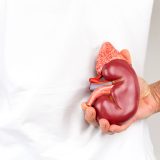Many of us have heard of the Neti pot as a means to clean out the nasal passages, but a great deal of mystery seems to surround this ancient practice. While some may have initially considered giving the Neti pot a try, recently publicized news of a fatal consequence of Neti pots has many doubting its worthiness.
Resembling a miniature version of Aladdin’s magical lamp, the Neti pot is a shallow container with a long, tapered spout. Neti pots are designed for irrigating the nasal cavity to relieve nasal congestion. Use of this tool can be traced back thousands of years to India, where the Neti was used as a cleansing technique in Ayuverdic medicine and Hatha yoga. Both conventional and alternative healthcare practitioners advise regular Neti pot use to help the following:
- Nasal Allergies
- Sinus Problems
- Colds
Sometimes referred to as nasal lavage or nasal irrigation, neti-potting typically involves the following five steps:
- Filling a Neti pot with a saline solution – about 16 ounces of lukewarm water to 1 teaspoon of salt.
- Tilting the head over a sink at a 45-degree angle.
- Placing the Neti’s spout into the top nostril, and gently pouring the saline solution into that nostril.
- With the mouth open to breathe, allowing the saline to flow through the nasal cavity and out the other nostril.
- Repeating on the other side.
Although practicing this nasal cleansing technique takes practice, the benefits of nasal lavage with a Neti pot appear to be real. Many people report an immediate improvement in sinus congestion and swear by this practice for keeping their respiratory system functioning optimally. Research backs up these reports, finding nasal irrigation to be an effective approach for relieving sinus symptoms when used along with standard sinus treatments or on its own.
The following concepts offer some rationale as to why the Neti pot is such an effective tool:
- Physically, pushing saline through the nasal cavity thins out mucus and flushes out foreign debris.
- Microscopically, cleaning the nasal cavity’s cilia (tiny, hair-like structures) improves their speed and coordination to more effectively remove allergens, bacteria and other irritants.
- Chemically, the salt in a saline solution draws edema out of tissue to reduce inflammation.
The main differences between a Neti pot and saline nasal sprays are the quantity and force of saline. Emerging as a fine mist, basic saline sprays battle dryness by keeping the nasal canal moist. Nasal lavage with a Neti pot delivers a greater quantity of saline with the capacity to flush debris out of the sinuses.
Unfortunately, Neti pot tragedy struck in the winter of 2011 – placing this valuable practice under a shadow of fear. Two individuals from Louisiana died from a rare amoeba infection that was acquired from nasal irrigation with a Neti pot. The culprit was Naegleria fowleri, an amoeba that lives predominately in warm, fresh water. Typically a result of recreational swimming, diving or water skiing in infested waters, Naegleria fowleri is acquired by people when infected water is forcibly aspirated into their nose. If this amoeba reaches the brain, it can cause a deadly type of meningoencephalitis.
Infection with Naegleria fowleri is very rare, with only 32 people affected in the U.S. between 2000 and 2010. Thankfully, there is a simple way to prevent this amoeba from gaining access to the sinus cavity when performing nasal irrigation. Experts advise against using tap water to rinse the nasal passages. Instead, they suggest using distilled, sterile or previously boiled water for the Neti’s saline solution. In addition, advocates condone rinsing the Neti pot after each use and allowing it to air dry.
Whether bombarded by sneezing and stuffiness from an environmental allergy to experiencing the pain and frustration of chronic sinusitis, the relief garnered from nasal irrigation can be a drug-free blessing. Making sure the water for a Neti pot saline solution is safe adds an extra step to the practice of nasal lavage, but for those who want to breathe easily and relieve sinus pressure, that extra step is well worth the effort.




